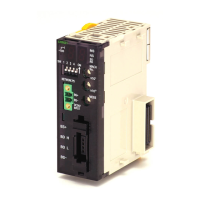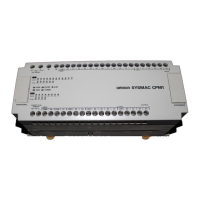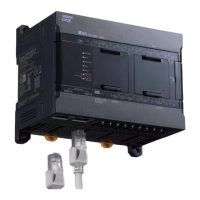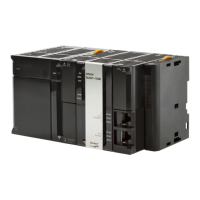845
3. Instructions
CS/CJ/NSJ Series Instructions Reference Manual (W474)
Serial Communications Instructions
3
Serial Communications Instructions
Serial Communications
Instructions
Serial Communications Instructions
There are two types of serial communications instruction. The TXD(236), RXD(235), TXDU(256),
RXDU(255), DTXDU(262), and DRXDU(261) instructions send and receive data in no-protocol
(custom) communications with an external device. PMCR(260)/PMCR2(264) sends and receives data
using user-defined protocols with an external device. The difference is shown in the following tables.
Note • TXD(236) and RXD(235) are used for built-in CPU Unit serial ports and serial ports on Serial Communi-
cations Boards with unit version 1.2 or later.
• TXDU(256) and RXDU(255) are used for serial ports on Serial Communications Units with unit version
1.2 or later.
• DTXDU(262) and DRXDU(261) are used for serial ports on CJ1W-SCU22/SCU32/SCU42 Serial Com-
munications Units mounted to CJ2H CPU Units with unit version 1.1 or later. These instructions enable
high-speed data communications.
• PMCR(260) and PMCR2(264) can be used only for the serial ports on Serial Communications
Units/Boards.
Instructions Communications frames Function
TXD(236),
RXD(235),
TXDU(256),
RXDU(255),
DTXDU(262),
and
DRXDU(261)
Any of the following can be used. Sends or receives data in one direction only.
A send delay can be set.
PMCR(260)
and
PMCR2(264)
The following type of frames (messages) can be created to meet the
requirements of the external device.
Up to 16 steps can be defined for sending and
receiving.
Steps can be changed and retry processing
performed based on responses.
Communications monitoring times can be set.
Symbols can be read/written for the PLC.
Repeat symbols can be used.
Other.
Data Data
Data Data
Only End Code
Data Data
No Start or End Code
Start and End Code
Only Start Code CR+LF End Code
Start and CR+LF End Code
Header Address
Data
Error check
Terminator
Communications steps
can be created.
I/O memory
Read/write
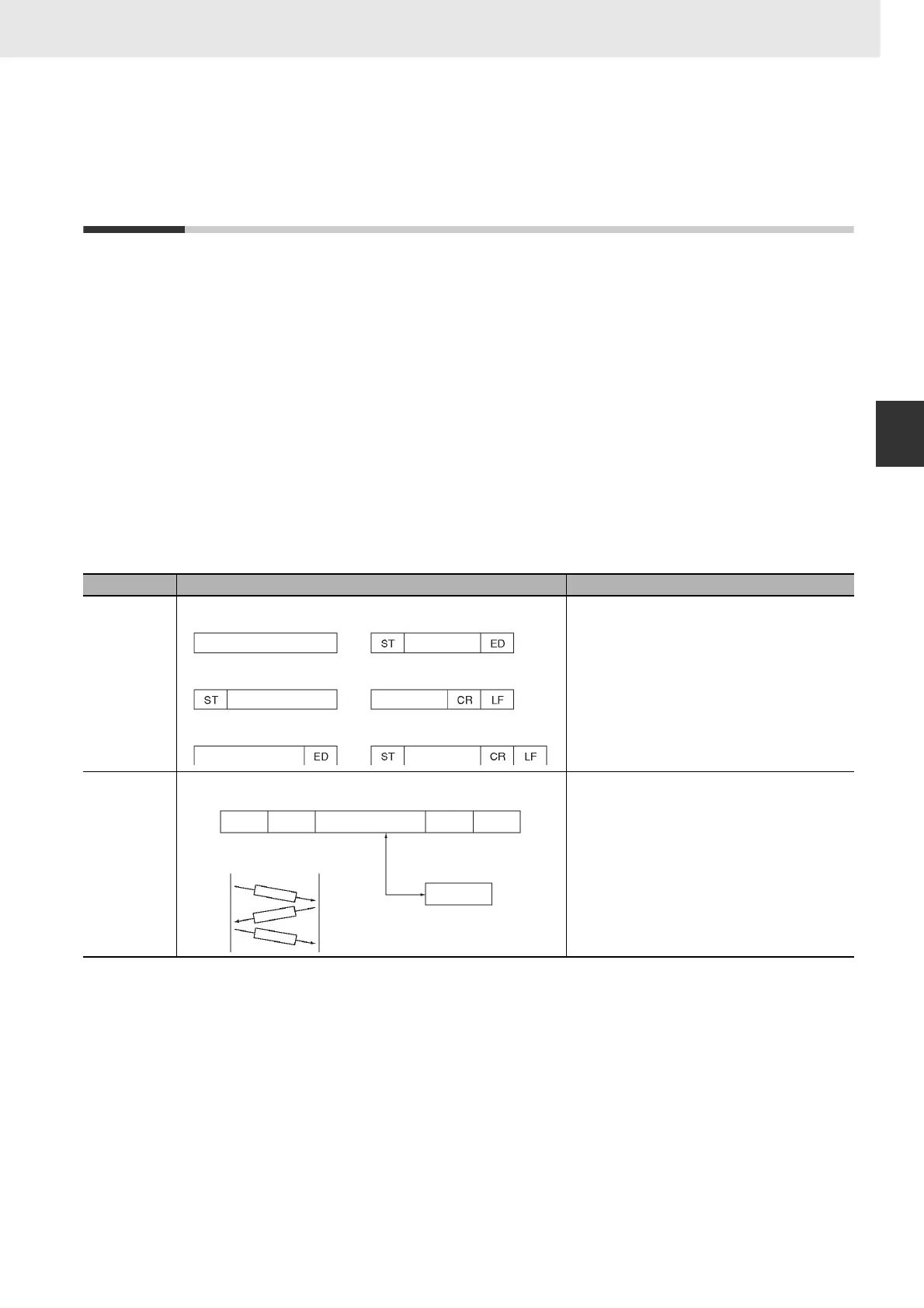